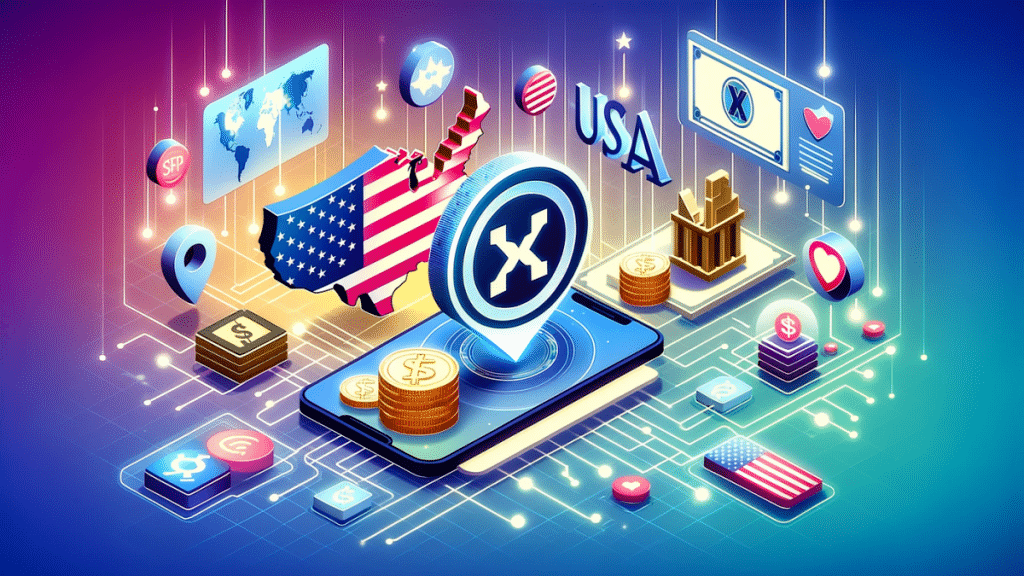Introduction
As 2023 unfolds, XRP emerges as a standout player, ranking as the 5th-largest cryptocurrency by market capitalization and gaining significant momentum. A recent pivotal court decision in the United States, affirming XRP’s non-security status, has ignited a surge in investor interest and prompted analysts to predict substantial price increases.
In this guide, we delve into the essentials of how to buy XRP, providing insights on navigating the current market dynamics and exploring whether XRP stands as a favorable investment opportunity at this juncture.
What is XRP?
Ripple’s innovative payment platform, RippleNet, utilizes the XRP Ledger to facilitate efficient global transactions. As a decentralized market, the XRP Ledger independently manages XRP trading, offering a secure and widely traded cryptocurrency.
Functioning both as a settlement layer for international finance and a decentralized market, XRP employs a unique consensus algorithm that relies on trusted sub-networks and a Unique Node List (UNL) to validate transactions, ensuring the reliability and security of its distributed ledger technology.
History of XRP
XRP, a cryptocurrency predating the 2017 ICO boom, historically traded between $0.005 and $0.01. During the 2017 Bitcoin surge, XRP skyrocketed to an all-time high of $3.84, marking a 60,000% gain in 12 months. However, it sharply declined post-2017, hitting below $0.15 in early 2020.
Despite fluctuations and an SEC lawsuit in 2020, XRP surged to $1.55 by May 2021. The lawsuit-induced crypto winter in 2022 saw a drop to $0.31. A pivotal court decision in July 2023 deemed XRP non-security, spurring a 75% price increase to $0.69.
How to Buy XRP?
To buy XRP, you can use the following:
– Centralized Exchanges
Centralized crypto exchanges are online platforms where users can buy, sell, and trade cryptocurrencies, including XRP, under the oversight of a company. These exchanges provide various trading features and a diverse range of digital currencies.
Additionally, centralized exchanges offer over-the-counter (OTC) trading, serving as intermediaries for large-scale cryptocurrency transactions. Typically catering to institutional investors and high-net-worth individuals, OTC desks offer enhanced liquidity and personalized services.
– Peer-to-Peer (P2P) Services
Peer-to-peer (P2P) services enable direct cryptocurrency exchanges between individuals, bypassing intermediaries like centralized exchanges and financial institutions. This decentralized approach provides enhanced privacy and transaction control. Despite these advantages, P2P services may exhibit lower liquidity and higher transaction costs when compared to centralized exchanges.
– Decentralized Finance (DeFi) Platforms
Decentralized Finance (DeFi) platforms, such as blockchain-based decentralized applications (dApps), revolutionize financial services by eliminating traditional intermediaries like banks. Complementary to P2P exchanges, they enhance cryptocurrency ecosystem liquidity, providing assets for lending, borrowing, and more. Offering greater transaction control and privacy, both P2P and DeFi cater to users without traditional financial access, with DeFi additionally employing smart contracts and automated market makers for diverse financial services.
– Cryptocurrency ATMs
Cryptocurrency ATMs, also known as crypto ATMs, are self-service kiosks that empower users to purchase and sell cryptocurrencies using cash or debit cards. Offering a user-friendly alternative to traditional exchanges, these ATMs, searchable on platforms like ATMlocator, Coin ATM Radar, CoinATMs, and Crypto ATM Map, provide convenient access to various cryptocurrencies, including XRP, without the need for exchange accounts.
– Payment Processors
Payment processors are integral in facilitating electronic transactions between merchants and customers. While primarily crypto-focused processors support XRP, traditional companies are exploring its use. MoneyGram collaborates with Ripple for XRP-based cross-border payments, and Tradelink integrates XRP for efficient international trade settlements. Despite PayPal’s crypto services expansion, XRP support remains unannounced as of now.
– Mobile Wallets
Ripple lacks a native wallet for direct XRP purchases, but various third-party wallets facilitate in-wallet XRP acquisition. Certain mobile wallets offer the convenience of buying and storing XRP directly on phones. However, users should be mindful of potentially higher fees associated with mobile payments for seamless access to XRP within the wallet.
Conclusion
The future of XRP remains uncertain amid Ripple’s legal battles with the SEC. Recent court rulings have provided some clarity, distinguishing XRP bought by retail investors as non-securities. This victory boosted investor confidence, doubling XRP’s value. Despite legal challenges, Ripple Labs expands globally, introduces new services, and gains regulatory approvals, such as a license in Singapore.
The evolving regulatory landscape will crucially impact XRP’s trajectory, emphasizing the intricate interplay between legal developments and the cryptocurrency’s market performance. Investors should closely monitor Ripple’s legal outcomes and regulatory advancements to gauge XRP’s long-term viability.
